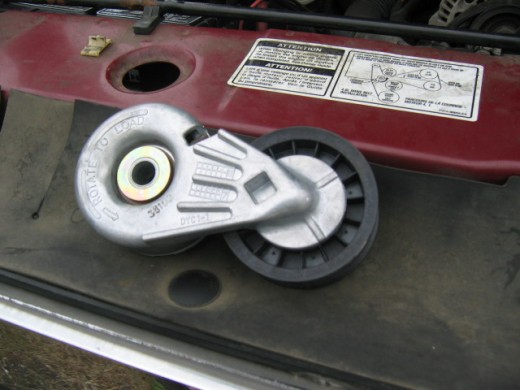Saving money on a minor car repair

Replacing your serpintine belt
With the average automotive shop labor rate at $100 an hour, it pays to be able to do some minor repairs to your car. All that is needed is a little bit of knowledge and a few tools, and replacing a drive or serpintine belt is as easy as changing a tire.
To begin with, a new belt must be purchased. It is necessary to know the engine size and what accessories it has. Does the engine have air conditioning, power steering, or an air pump? If in question, write down the vehicle identification number, and the parts house or dealership can look up the correct belt. If all the information is right, the frustration of getting the wrong part is avoided.
Once the correct belt is acquired, it is necessary to locate the decal in the engine compartment that has a diagram of the belt routing. These are found in various places. Sometimes they are on the backside of the hood, or on the radiator support. Look carefully because they are almost always there. If the decal is missing, draw a crude picture of the belt routing, marking all of the pulleys; this will be essential in order to install the new belt once the old one has been removed. Don't trust your memory. It is very difficult installing a belt without a diagram.
Every serpentine belt has a spring loaded tensioner that puts pressure on the belt to take out the slack or play. The tensioner must be pulled back to release the pressure on the belt in order to remove it. If you are not sure which one of the pulleys is the tensioner, pull up on the belt and the tensioner will move up and down with the movement of the belt. Once the tensioner is located, you will see a square hole where a ratchet can be installed, but this varies with each manufacturer. Install the ratchet and pull back. When the belt slackens, remove the belt from the pulley.
With the belt removed, compare the old belt with the new one. Count the grooves in the belt. Stretch out each belt side by side, making sure they are the same length. If there is even an inch difference, the belt will not fit.
Following the diagram, install the new belt on the lowest pulley first, wrapping it around each pulley, leaving the belt tensioner for last. While pulling up on the belt, run your hand around each pulley making sure the belt is properly seated in the grooves. Now pull back on the tensioner with the ratchet and slip the belt onto the tensioner pulley, and release the tensioner. If it appears that the belt does not fit, it probably is not seated into one of the pulley grooves. Check this again by running your hand around each pulley.
Once the belt is installed, check to make sure the belt is tight; there should be no excessive play in the belt. Recheck once more that the belt is properly positioned on each pulley.
With all tools and shop rags removed from the engine compartment, start the engine and shut it off. Recheck the position of the belt, making sure it didn't change position after being started.
With the job completed, I always stow the old belt in the trunk for emergencies. Not only have you saved yourself close to $100, but more importantly, if your belt should ever break on a road trip, you will have a back up belt in your trunk and the ability to install it.



